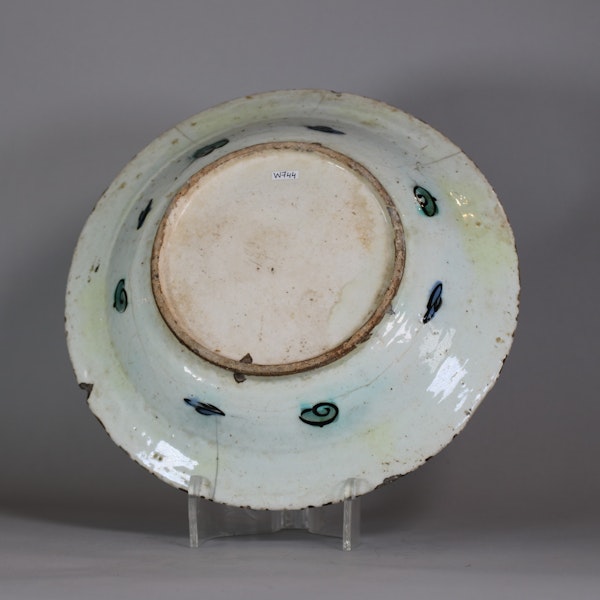Iznik plate, Ottoman Turkey, 17th century
Iznik plate, Ottoman Turkey, 17th century
POA
Description
Iznik plate, Ottoman Turkey, 17th century, coated in a white slip and decorated in cobalt blue, black, bole red and green with a floral design within black concentric circles, including a large curled saz-style leaf and foliate stems of tulip and carnation with variegated leaves, the flat rim with an arrangement of small black scrolls, the reverse with small alternating shapes.
Diameter: 25.1cm. (10 in.)
Condition: Some hair-line cracks and rim chips; condition best seen from images
Notes:
Flowers played a significant role in Ottoman culture and art, adorning textiles, prayer books and ceramics. Ottoman floriculture was the subject of many commentaries by European writers who were impressed by the gardens and flower markets they saw during their travels. Writing in the mid-16th century Pierre Belon du Mans observed that: ‘There are no people who so much delight in beautiful flowers as the Turks, when they find a beautiful wallflower or some other graceful flower, even though it has no smell they do not prize it the less […] Artisans commonly have several flowers of different colours in a jar of water in front of them, to keep them fresh in their beauty. And so the Turks think as much of their gardens as we do, and go to great trouble to get exotic trees, particularly those that have beautiful flowers, and grudge no money for the purpose’ (trans. James Hogarth, 2012). Gardens were especially important, not just as meeting places for courtiers and scholars, but as intellectual and spiritual spaces for contemplation of Qur’anic descriptions of the garden of Paradise. Individual flowers held specific connotations; for example tulips (lâle) were revered as the holiest of flowers and were often incorporated into textile design to protect the wearer from harm, while carnations (karanfil) were thought to be a symbol of the renewal of life and nobility. They both feature in classical lyric poetry of the Ottoman Empire, including that of Nef’i, who wrote many poems about the sacred symbolism of the spring garden: ‘Spring has come again and there’s a subtle fragrance in the air,/ Paradise seems everywhere, each niche a heaven of delight’. (from ‘The Penguin Book of Turkish Verse’).
| item details | |
|---|---|
| Material and Technique | Ceramic with slip and enamel decoration |
| Origin | Middle Eastern |
| Period | 17th Century |
| Diameter | 25.1cm. (10 in.) |
Product REF: W744




